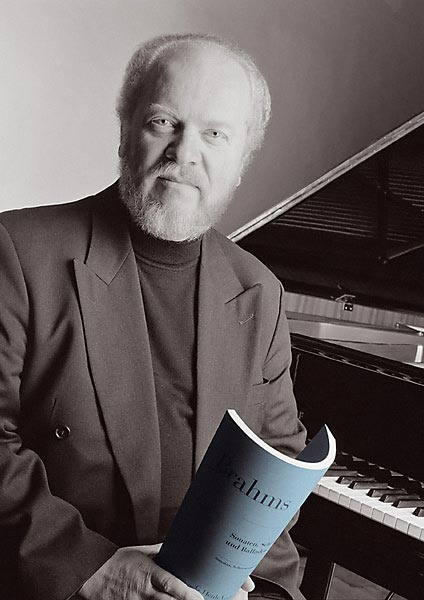Oppitz opens Brahms series with probing command

Gerhard Oppitz opened his Brahms series Wednesday night at Tanglewood's Ozawa Hall.
Between the big orchestral concerts in the Koussevitzky Shed, Tanglewood has begun offering a more intimate – yet expansive – major survey each summer of a composer’s works for solo piano. Garrick Ohlsson offered Chopin in 2010 and Jean-Yves Thibaudet performed Ravel last summer.
Gerhard Oppitz, this year’s soloist, has embarked on a rarity: a four-concert Brahms cycle. The opening program, given Wednesday night in Seiji Ozawa Hall, offered a deep immersion into a composer’s output from his early to late years. A former student of Wilhelm Kempff, Oppitz follows in the German piano tradition, holding Brahms’ classical and romantic instincts both close to the heart and in firm balance.
Since tackling and recording the Brahms cycle in the late 1980s, Oppitz has played it 30 times but never before in the United States. So close was the identification between composer and performer that in profile, the bearded Oppitz resembled the bearded Brahms crossing hands in the famous Beckerath painting.
The opening program went from the early Scherzo, Op. 4 (1851) and Sonata No. 3, Op. 5 (1853) to the Two Rhapsodies, Op. 79 (1879), and the Four Pieces, Op. 119 (1893), neatly outlining Brahms’ development from age 20 to 60. The novelty was the sonata, a massive, symphonically conceived work that sounds like a cross between Schumann and Beethoven, with the former in the ascendant. (Schumann advised the still-neophyte Brahms on its composition.)
It’s a shame the piece isn’t more often played. Despite awkwardnesses – here masked by the empathy of the playing – the five-movement work has musical interest in its own right and as a foreshadowing of things to come. A chain of falling thirds at the opening of an Andante espressivo movement, for example, recurs almost verbatim in the first of the Opus 119 intermezzos. It’s practically a Brahms signature, in fact.
The stand-alone Scherzo is almost diabolic in its driving energy, a force that Brahms tamed in the scherzos of his chamber music. With the Op. 79 Rhapsodies, Brahms the lyricist emerges. And the four late pieces demonstrate the distillation of Brahms’ art. The first pair of pieces, both intermezzos, is pensive, even valedictory. In the final Intermezzo and Rhapsody, Brahms is the bon vivant again, humorous and swinging along by turns.
There is little of the showy virtuoso in Oppitz, though his command of the keyboard, in both the knotty early works and the more compressed later pieces, was complete. What was most striking was the deep, rounded tone and penetration to the core of music that does not offer the immediate gratification of Beethoven’s or Schumann’s piano music.
The program, in fact, revealed how opposite Brahms’ trajectory was to Beethoven’s as a composer for the piano. Where Beethoven started with relatively simple forms and proceeded, over 32 sonatas, to more complexity, Brahms composed his only three sonatas as a youth and refined his art into his old age. The late pieces are virtual
miniatures, their titles interchangeable.
The three remaining Brahms recitals, also mixing works from different periods, will take place tonight and July 25 and 26. Oppitz will also play Mozart’s C minor Concerto, K. 491, with the Boston Symphony Orchestra Sunday afternoon. bso.org
Posted in Performances





Posted Jul 23, 2012 at 7:53 pm by Mark Shornick
Mr Pincus, do you know which cadenzas Mr Oppitz played in K.491 yesterday?